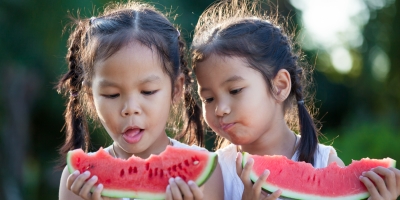Nearly half of all child deaths around the world are due to undernutrition. It’s often overlooked, but infant and child nutrition is crucial to public health. Correct feeding throughout the first two years of development reduces the risk of chronic illness and morbidity for the rest of a person’s life. This one component of public health could improve quality of life markers in any country. Developed countries that have the resources should be especially interested in improving infant and child nutrition. Better nourishment in those early years reduces health costs over time and provides economic gains for both the nation and the individual family.
For years, this conversation was confined to the top infant formula manufactures. But it’s time for more of us to ask, what’s going on in the world of infant and child nutrition?
The best way to nourish infants is of course, breastfeeding. It provides all the right nutrients in the most bioavailable forms for babies’ digestive systems. But about 38% of new mothers choose not to breastfeed or are unable to produce enough milk to feed their babies. For these families, quality baby formula is crucial for the proper nourishment of infants.
Key Nutrients for Infants
Every single infant and child has the right to adequate nutrition. Since babies can’t properly nourish themselves, they depend on their parents, family, and society to support their health and development. Here are a few of the important nutrients that modern science has identified as essential for infants.
- Protein – Infant growth and development is largely supported by protein synthesis. This process can’t happen optimally without the regular consumption of essential amino acids.
- Calcium – This mineral is responsible for supporting the formation and growth of infant bones, as well as muscle contraction, heart function and other biological functions.
- Iron – Brain development depends on iron because it plays a key role in synaptogenesis (formation of synapses), myelination (insulation of the neurons in the brain), energy metabolism, and more.
- Vitamin A, B, C, and E – These vitamins help with a variety of development needs, such as vision, skin health, immunity, cognition, and more.
- Docosahexaenoic acid (DHA) – Omega-3 fatty acids are essential for infant development, but DHA has become famous recently as a baby brain food, playing a crucial role in vision and cerebral development.
However, the reality of infant nutrition is much more complex than a list of nutrients. For example, breastmilk has a specific ratio of different proteins, and the nutrient composition of breastmilk changes over time based on the needs of the developing infant. It’s also completely bioavailable for absorption by the baby’s digestive system.
Nature’s “liquid gold” has set the bar high for infant formula. Developing a product that reaches the standard has been a long, complex process that continues to this day.
A History of Infant Formula Development in the U.S.
Before any kind of infant formula existed, there was wet nursing. Women—that belonged to wealthier families—who were unable to breastfeed or chose not to, hired a wet nurse to breastfeed their baby for them. Orphanages and lower-class families would often feed infants donkey’s milk or other animals’ milk when breastfeeding wasn’t an option. But without knowledge about germs and sanitation—let alone regulated formula options—a third of infants who weren’t breastfed died before their first birthday.
Fortunately, the situation changed a lot during the 1800s.
The first commercial infant formula was developed in 1860 by German chemist, Justus von Leibig. It was a powdered formula based on wheat flour prepared with cow’s milk. Shortly after, pasteurization was discovered. The process of using heat to eliminate bacteria would eventually reduce microbe-related infections and diseases. Pasteurization also made it easier for unrefrigerated milk to be transported without spoiling.
By the late 1800s, “Nestle’s Infant Food” was being manufactured from wheat flour, malt flour, sugar, and cow’s milk. But due to the relatively high cost, the company didn’t enjoy widespread sales of their early infant food.
The invention of evaporated milk changed the trajectory of infant formula. It could be transported even more easily without spoiling, which is why it was initially used to feed soldiers during the Civil War. By the 1920s, multiple studies had been published showing that evaporated milk was more digestible for infants and more comparable to breastmilk. Physicians and parents were sold. Evaporated milk became a standard ingredient for infant formula preparation.
After the 1950s, commercial formula exploded in popularity. Similac and Enfamil entered the market and practically replaced the previous homemade evaporated milk formulas. But the widespread acceptance of these new formulas wasn’t completely organic.
To build public trust in their products, manufacturers provided their formulas to hospitals for free or at low-cost. The strategy was quite successful. Many women believed commercial formulas were “medically approved” for optimal nutrition and continued to feed their babies commercial formula after coming home from the hospital. It was also inexpensive and easy to prepare. Modern commercial formula had cemented its place in the market, but without any regulation, some infants experienced adverse health conditions resulting from the consumption of certain formulas.
The Infant Formula Act, passed in 1980, set maximum and minimum standards for some of the common nutrients in infant formula. Around this time, the U.S. Food and Drug Administration (FDA) began requiring testing and other standards for manufacturing facilities.
In the modern era, iron fortification of infant formula became more standard, and the whey-to-casein protein ratio was modified to resemble human milk. Specialty formulas like lactose-free, and rice starch options were also developed by bigger manufacturers (Ross and Mead Johnson).
Today’s most popular commercial formulas are a night-and-day difference from the first infant food produced in 1860. Infant and child nutrition has undoubtedly come a long way. So, is there a perfect alternative to human breastmilk now? Not quite, but some scientists say the European Union (EU) is on track to achieving that goal sooner than the U.S.
Comparing Modern Infant Formula in the EU and U.S.
In the U.S., the federal nutrition requirements are outlined in the Infant Formula Act, which was last amended in 1986. Some manufacturers choose to exceed the requirements, and parents will likely notice these variations in quality across formula options in the U.S.
Europe has done things a little differently. Physicians and scientist’s opinions are more integrated with EU regulations, and they are updated every few years. Compared to the FDA, the EU Commission is more prescriptive, and there is ultimately little variation between formula options in the EU.
Here are some examples of how the EU has implemented new findings from infant and child nutrition research.
Formula for Each Phase of Development
The EU has different stages of formula. Stage 1 is for 0-6 months, and Stage 2 is for 6-12 months. The difference lies in the balance of milk proteins, and the increased amount of iron that babies need after six months.
Exclusions and Inclusions
There are specific ingredients listed in the EU that infant formulas must not contain, like corn syrup, guar gum, and others. The European Commission has also listed mandatory inclusions, such as the essential fatty acid, DHA. This requirement was adopted in 2020 after a growing body of research showed the benefits of DHA to support brain development. Various amino acids and probiotics are also included in EU formulas, like Lactobacillus, which is a component of breastmilk that has been shown to support a range of infant health benefits.
Since the beginning of commercial formula manufacturing, through today, European formula can’t be legally sold in the U.S. The policy essentially bifurcated the path of research, development, and regulation of commercial infant formula between the two continents. That separation has led to some big differences in infant and child nutrition today.
The Future of Infant and Child Nutrition
Generations of work and scientific discovery have produced amazing achievements. But there’s still a ways to go to provide families with the best alternatives to breastmilk that science can offer. The next phase of progress would likely require collaboration between physicians, scientists, health professionals, and regulatory agencies who could continuously implement new research findings.
As a crucial component to public health, infant and child nutrition deserves more attention, education, and resources. Many of us depend on baby formula as a life-saving alternative to breastmilk. So it’s important to educate ourselves and raise awareness. Start conversations and share resources with others around you. There are people at your workplace, church, and neighborhood that could be participating in this conversation. It’s up to all of us to influence the direction of the future.
References
- https://www.ncbi.nlm.nih.gov/pmc/articles/PMC2865685/
- https://www.fda.gov/food/people-risk-foodborne-illness/questions-answers-consumers-concerning-infant-formula
- https://ec.europa.eu/food/safety/labelling-and-nutrition/specific-groups/food-infants-and-young-children_en
- https://pubmed.ncbi.nlm.nih.gov/22123641/
- https://pubmed.ncbi.nlm.nih.gov/10479465/
- https://pubmed.ncbi.nlm.nih.gov/33321792/
- https://www.nytimes.com/2020/04/18/parenting/baby/european-formula.html
- https://www.accessdata.fda.gov/scripts/cdrh/cfdocs/cfcfr/cfrsearch.cfm?fr=107.100.
- https://pubmed.ncbi.nlm.nih.gov/27336588/
- https://www.ncbi.nlm.nih.gov/pmc/articles/PMC2684040/
























 Mixing fables and Internet fallacies blurs the line between fact and fiction. And that’s damaging because you can’t make smart decisions without accurate information.
Mixing fables and Internet fallacies blurs the line between fact and fiction. And that’s damaging because you can’t make smart decisions without accurate information.


